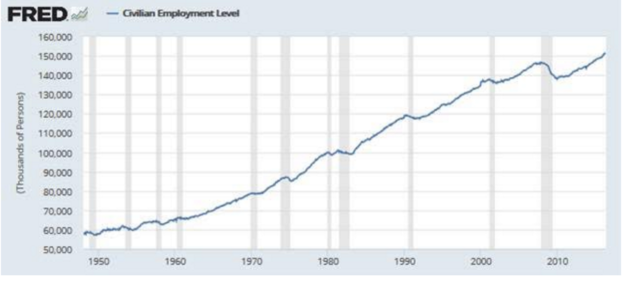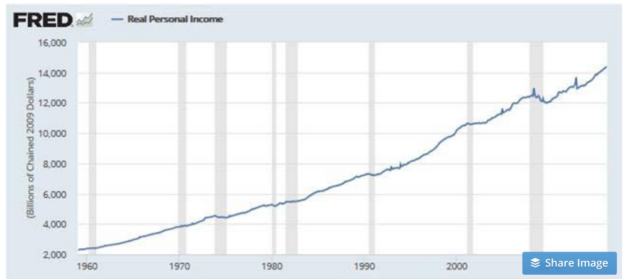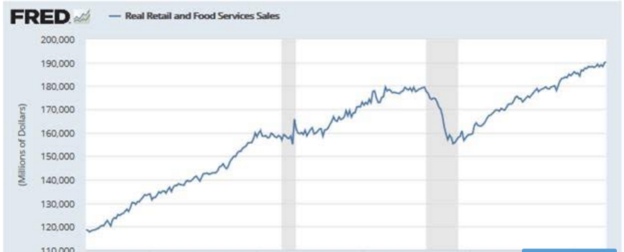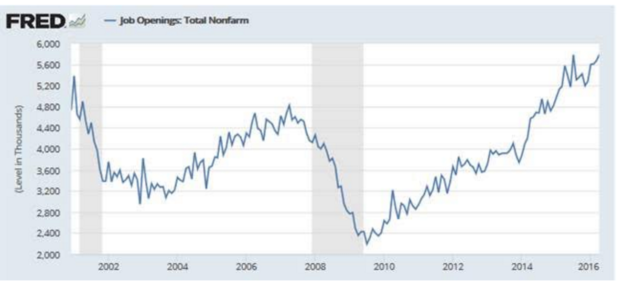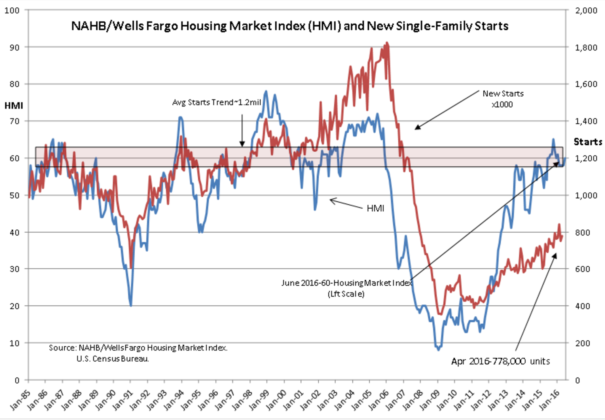“Davidson” submits:
High fear of financial collapse! Major investors saying “Get out!”, ‘Brexit’ forecasts dire for European economy! In the US, top investors say Fed has lost control and the economy or something will spiral out of control. These are only a few of the current basket of concerns. And then there is our current Presidential election fare and the terrorist attack in Orlando.
In reality, this week’s concerns have not been much different than what we have seen since the current economic recovery began in 2009. The only means we have to determine if it is market psychology and high profile events which control our economy or economic fundamentals is to review our history. That look back makes it clear that it is economic fundamentals, not geopolitical events, not market psychology which are the long-term drivers of markets. It is the direction of economic activity which eventually drives market psychology towards optimism. It has been my experience, that pessimism is the rule for most of a recovery till we eventually shift towards optimism. We are then optimistic for several years and remain so even 6mos beyond the inception point of economic correction. Market psychology lags economic activity. It is called “The Recency Effect”, i.e recent experience colors our expectation.
Economic Fundamentals Drive Market Psychology…Market Psychology Drives Market Prices
Today’s markets are different than the past. A major influence is the media’s explanation for every wiggle in prices as having economic causality. Our focus has been too short term. In the morning the media can say prices rose/fell because of one thing and in the afternoon provide an entirely different explanation. The next day we hear yet another explanation. The facts are that economic trends do not shift daily, weekly or even monthly. It takes about 6 months before we can tell if a new trend has formed or the existing trend has deviated from its previous pattern. Yet, not only the media, but analysts and even the Federal Reserve appears to view economic trends as having the ability to change direction frequently. Economic trends have never changed direction as frequently as advertised. Economic up-trends develop over multiple months and hold-to-trend for years once in place. Economic corrections are relatively short-lived. Corrections last about 18mos if permitted to follow their natural progression.
The current investment environment is one of pessimism. Perhaps, we should hope that this continues. Our economy meanwhile continues to expand.
We have record highs in employment which show signs of recent acceleration:
Record employment produces record Real Personal Income:
Record Real Personal Income results in record Real Retail and Food Svc Sales:
And, it appears that an early indicator of economic expansion, Job Openings has hit record highs:
Meanwhile, the US Housing sector is operating at 1990 recession levels(see the New Single-Family Starts chart) with no excess whatsoever. US Housing has been a past prime area of excess spending and excess borrowing which has led to corrections..
Economic activity is measurable and understandable. We have never gone into economic correction without weakness in employment and retail sales trends. In my experience there is no such thing as a ‘Black Swan’. Economic activity does not suddenly turn into a correction. Corrections have never occurred without a prolonged observable period of economic excess followed by a period of preliminary weakness. Current economic data supports ignoring current fears because, as so often in the past, there are no signs of economic excess or weakness.
My analysis reveals that we average about 3% in our Real Private Economy. Our Real Private Economy is the source of taxes for government spending. Growing the Real Private Economy in excess of 3% means we will eventually have a period of growth below 3%. The greater the period of excess the sharper the correction. We have no excess today with the Real Private Economy operating at ~3%.
The long-term Real Private Economy growth rate is part of the ‘Natural Rate’ Knut Wicksell identified in 1898. Adding our current inflation rate of 1.8%(12mo Trimmed Mean PCE) gives us ~4.8% as today’s ‘Natural Rate’. This is roughly the level 10yr Treasury rates should trade. The 10yr Treasury near ~1.6% today is why I remain extremely cautious on fixed income.
While the world frets and then frets some more, economic activity has continue to expand. Eventually, investors have never failed to turn more optimistic and remain so for several years. It is this period of optimism from which excess economic activity derives. It should be readily apparent that while economic activity continues to expand, optimism and economic excess is not part of the current equation. It could said that “Excess pessimism does not produce excess economic activity!” There is no economic correction on the horizon. This does not mean that we could not have a dip in market prices at any point in time for other reasons. Dips should not matter for long-term investors. I anticipate taking action only once economic fundamentals indicate a correction is likely.
While world frets, investors should remain positive. LgCap Domestic and International as well as Natural Resource equities have the higher Reward-lower Risk characteristics in my analysis.
